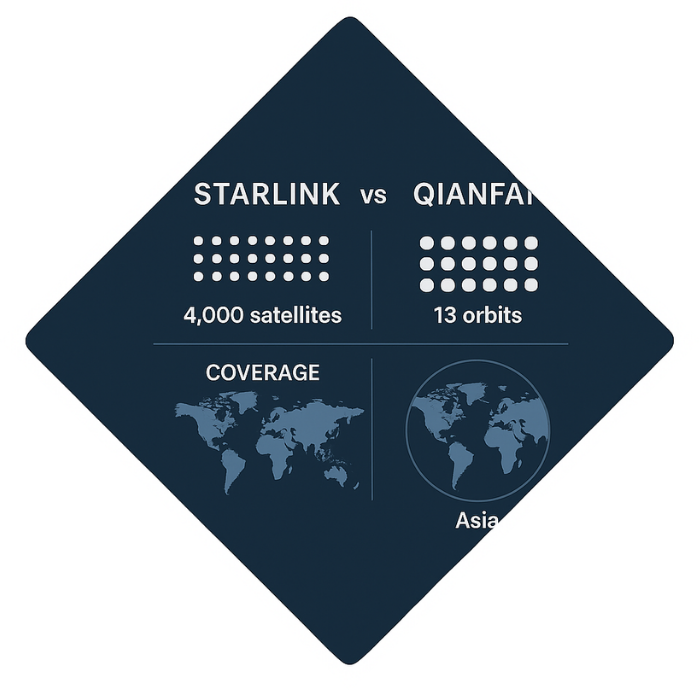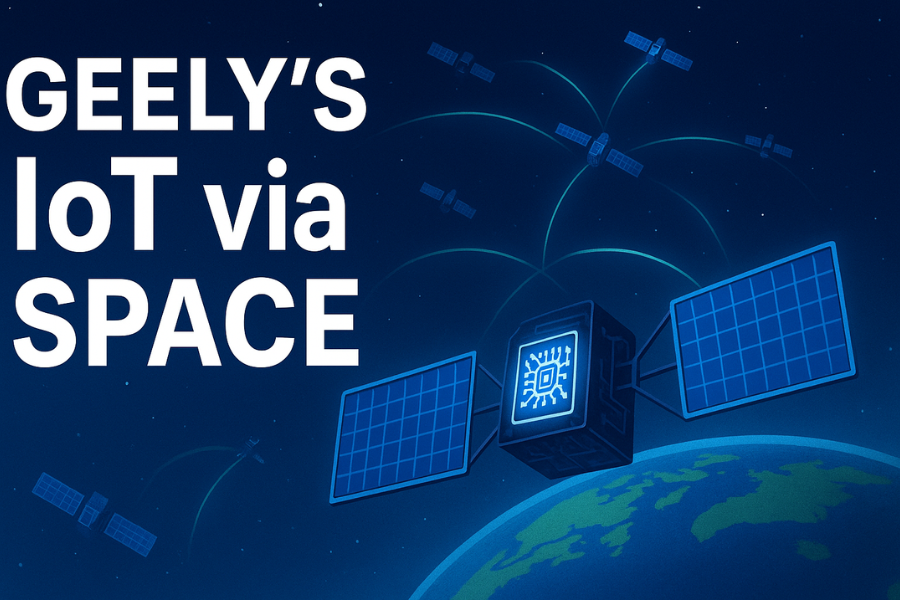Introduction
When you think of China’s Geely, sleek sedans, futuristic electric vehicles, and Volvo ownership might come to mind. But the Chinese automaker has bigger ambitions than just making cars. Geely is now venturing into space—literally. Through its Geely Technology Group, the company is building a low-Earth orbit (LEO) satellite constellation to power Internet of Things (IoT) services, autonomous driving, and global connectivity.
This move positions Geely not only as a car manufacturer but also as a mobility ecosystem player, where vehicles, satellites, and AI-powered networks converge to redefine how people and machines connect. As automotive, telecom, and aerospace industries converge, Geely’s bold step into satellite deployment marks a new era of competition and innovation.
Why a Carmaker Needs Satellites
Cars today are no longer just mechanical machines—they are computers on wheels, requiring vast amounts of data to operate safely and efficiently. Features such as:
Autonomous driving systems (real-time navigation, sensor fusion)

Vehicle-to-everything (V2X) communication
Smart fleet management for logistics
Seamless global navigation and entertainment systems
all depend on stable, high-bandwidth, low-latency connections. Traditional terrestrial networks like 4G and even 5G cannot always guarantee uninterrupted coverage, especially in remote or rural areas.
That’s where Geely’s satellites come in. By building its own constellation, the company ensures its vehicles—and potentially millions of others—can operate within a secure, private, and reliable digital network that is not dependent on outside providers.
The Satellite Network: What We Know
Geely’s satellite constellation is designed to operate in low-Earth orbit, similar to SpaceX’s Starlink or China’s Qianfan project. Reports suggest Geely plans to deploy hundreds of satellites to serve as a backbone for its IoT ambitions.
Key Features
Precision Navigation: Enhanced GPS services with centimeter-level accuracy for autonomous driving.
IoT Integration: Linking vehicles, drones, shipping fleets, and smart devices in one network.
Automotive First: Unlike other constellations, Geely’s satellites are purpose-built to serve cars and mobility ecosystems.
Dual-Use Potential: While designed for cars, the network could extend to smart cities, logistics hubs, and even consumer electronics.
The satellites will be manufactured at Geely’s dedicated aerospace factory in Taizhou, one of China’s first private facilities capable of mass-producing satellites.
Strategic Benefits for Geely
Autonomous Driving Edge
Autonomous vehicles need constant access to precise, real-time data. Geely’s satellites could give its cars an edge over competitors by guaranteeing stable connectivity even in places where 5G isn’t available.

Global Brand Differentiation
While Tesla leads in EVs, it does not own its own satellite infrastructure (relying instead on third-party networks). Geely can differentiate itself as a vertically integrated mobility company.
Data Sovereignty
By controlling its own constellation, Geely secures full ownership of data flows, a crucial advantage in an era where cybersecurity and privacy are global concerns.
Expansion Beyond Cars
Geely could use its network to support shipping fleets, aviation, drones, and logistics—turning it into a broader IoT provider, not just an automaker.

Challenges Ahead
High Costs: Launching and maintaining a constellation of satellites requires billions in investment.
Space Congestion: With Starlink, OneWeb, Amazon’s Kuiper, and China’s Qianfan already in orbit, spectrum allocation and orbital slots will be competitive.
Pricing Advantage
Starlink kits cost around $600, with monthly fees of $110+. Qianfan terminals, subsidized by China’s government and state firms, may be sold at lower prices, making them attractive for developing countries.
Belt and Road Integration
Qianfan is expected to align with China’s Belt and Road Initiative (BRI), offering internet infrastructure to partner countries across Africa, Asia, and Latin America. This could extend China’s digital influence globally.
Private vs. State-led
Starlink is a private project (albeit with U.S. government contracts), while Qianfan is a state-coordinated initiative, pooling resources from aerospace corporations, universities, and government agencies.
International Trust: Global adoption may be limited if foreign regulators see the constellation as a potential surveillance tool.
Scalability: Ensuring that the network can handle millions of connected vehicles without latency issues is a complex technical challenge.
Geopolitical Implications
Geely’s satellite constellation doesn’t just benefit cars—it strengthens China’s space internet ecosystem. Alongside Qianfan and state-led projects, Geely’s initiative adds resilience and diversity to China’s digital infrastructure.
By deploying IoT satellites that integrate with vehicles, shipping, and urban systems, Geely could also contribute to China’s Belt and Road Initiative, providing partner countries with new digital connectivity options. This has the potential to shift global dependencies away from Western providers like Starlink.
Conclusion
Geely’s foray into space is more than a branding stunt—it’s a strategic transformation. By launching its own satellite constellation, Geely is ensuring its future vehicles, from smart sedans to autonomous fleets, are connected to a proprietary network designed for precision, reliability, and independence.
This bold move positions Geely as more than a car company—it’s evolving into a mobility and technology powerhouse that spans earth and space. As more industries converge, the question is no longer whether automakers will embrace space, but how quickly others will follow Geely’s lead.
With satellites orbiting overhead and cars navigating autonomously on the ground, Geely is quite literally connecting the dots between mobility, IoT, and the final frontier.






